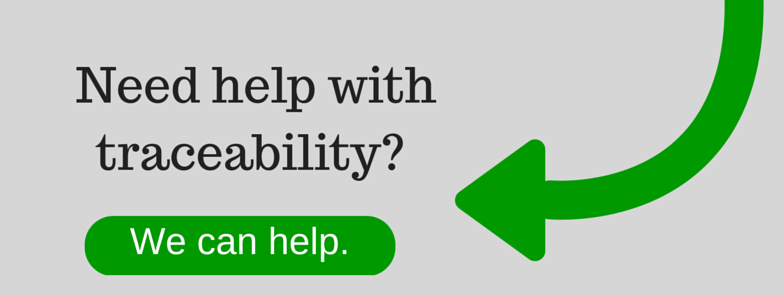For food safety and supply chain professionals, the usefulness of end-to-end supply chain traceability data is clear—traceability insights help streamline supplier management, enable faster detection of safety and quality incidents, and ultimately help deliver the best possible food to consumers.
But it’s not just supply chain personnel who benefit from the wealth of intelligence offered by whole chain traceability data. Stakeholders throughout a company’s operations, finance, technology and brand divisions can use data from a traceability software solution to meet their objectives and create an aligned front to drive toward larger business goals.
Let’s explore some ways professionals outside the supply chain food industry can benefit from traceability software and put the data to work for their business units.
1. Helping Marketers Back Up Your Brand Promise
Your customers want to know the quality and safety claims in your marketing communications are real and verifiable. If you promote locally sourced produce or humanely raised meats, supplying names, locations and hard statistics can make those claims resonate with customers and encourage trust in your brand. Whole chain traceability data shows your audience that your commitment to quality is authentic and sincere.
As you create brand awareness campaigns to highlight your safety and quality mission, use traceability data to showcase key stats from top-performing suppliers and growers. In videos, infographics, or eBooks, illustrate the paths ingredients travel to reach customers’ plates, or share stats on the storage standards and handling processes that ensure a safe, fresh final product.
2. Empowering Financial Professionals for Better Cost Management
A strong tie between the finance department and the supply chain helps leaders set the pace of business growth, justify investments in new markets and better manage risk. According to a report from professional services firm EY, “An overwhelming 83% of finance business partners and 87% of supply chain business partners agree that data and analytics present CFOs with an unprecedented opportunity to drive a more collaborative, business partnering relationship with the supply chain.”
Finance professionals can use traceability data to identify inefficiencies throughout the chain, categorize costs at a more granular level and spot negative financial trends early, then work with the supply chain team to quickly course-correct.
This data lets finance personnel run different scenarios to gauge the costs of switching to new growers or distributors. They can use these insights to align supplier and grower capacity with demand and anticipate the impact of regulatory risks and tax incentives.
3. Equipping Technology Teams for Rising Data Demand
We know the pressure CIOs face to vet new technology investments and prove their ROI. The good news is traceability software creates opportunities for greater efficiencies throughout the entire organization. Incorporating supply chain data into enterprise-wide systems leaves companies better positioned to meet consumer demand for food safety and quality information.
A variety of apps provide sourcing and allergen information for area grocery products and restaurant menu items. As more people get into the habit of researching food purchases online, more technology offerings will enter the field to serve them. But your own rich data might make your company the best voice to educate the public about your products.
Explore ways to integrate sourcing and nutritional data into your mobile apps and website. Deploy tablets in restaurants or stores to show customers where ingredients came from and how they were produced. Pilot novel technology tools that give consumers the supply chain details they’re hungry for.
And don’t forget internal stakeholders: Make traceability data widely available via databases, intranet sites or by integrating it with your existing ERP, to let employees access the metrics they need to do their jobs more effectively.
Supply chain traceability can benefit everyone. Learn more about how your organization can use this solution in our guide, Selling the C-Suite on Supply Chain Traceability Software.
Tag(s):
Supplier Compliance
Other posts you might be interested in
View All Posts
Food Industry
7 min read
| April 7, 2023
The Essential Components of a Successful Food Traceability System
Read More
Food Industry
8 min read
| June 29, 2023
How to Harness Supplier Data to Improve Food Safety Efforts
Read More
Food Industry
17 min read
| October 12, 2023


